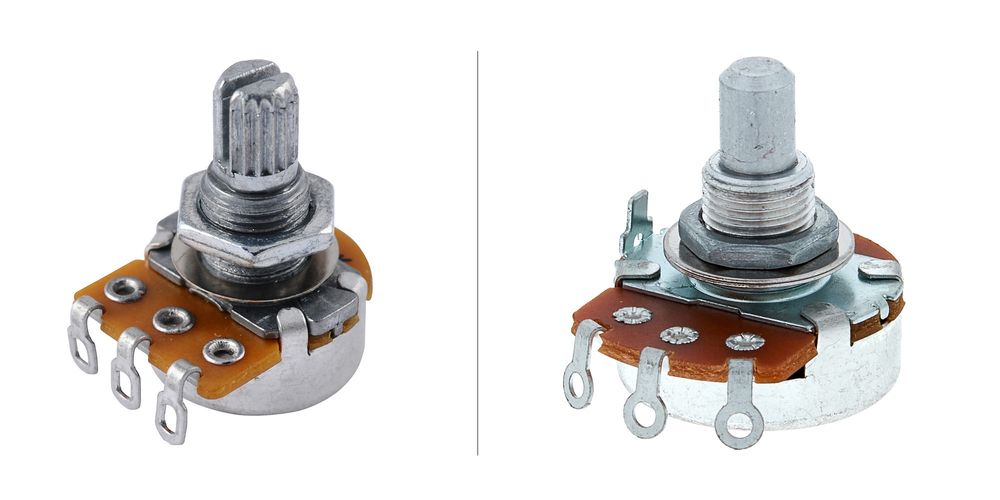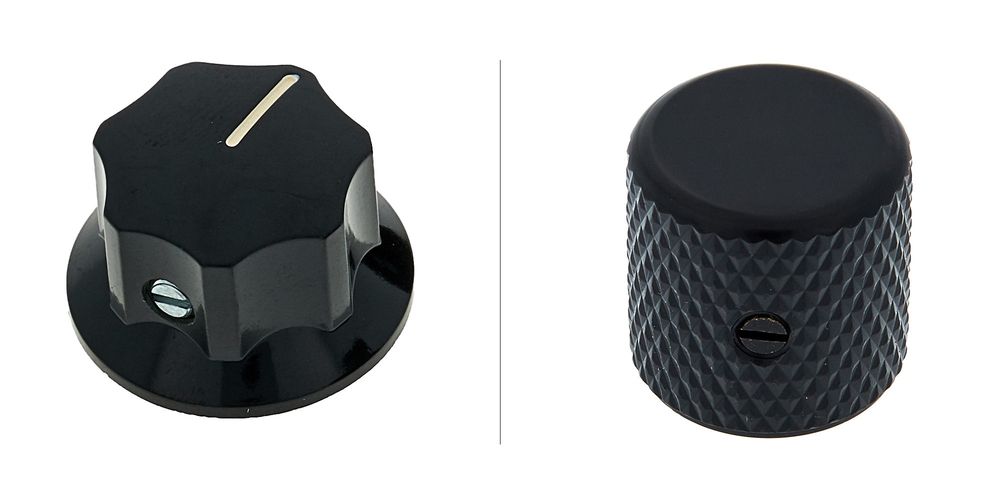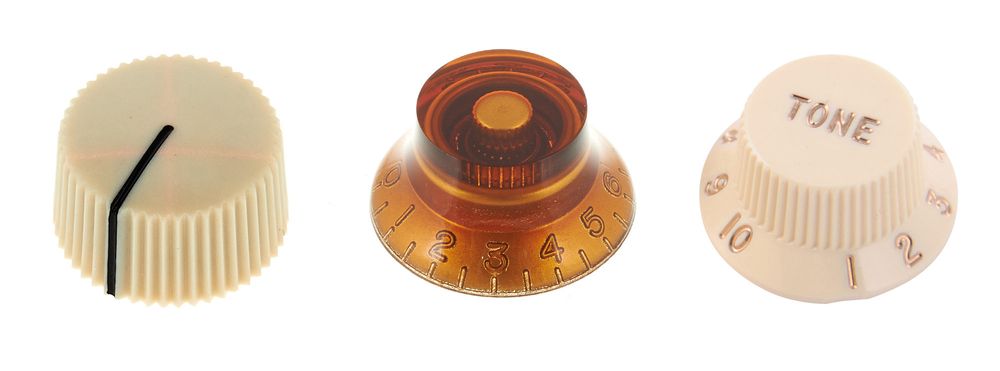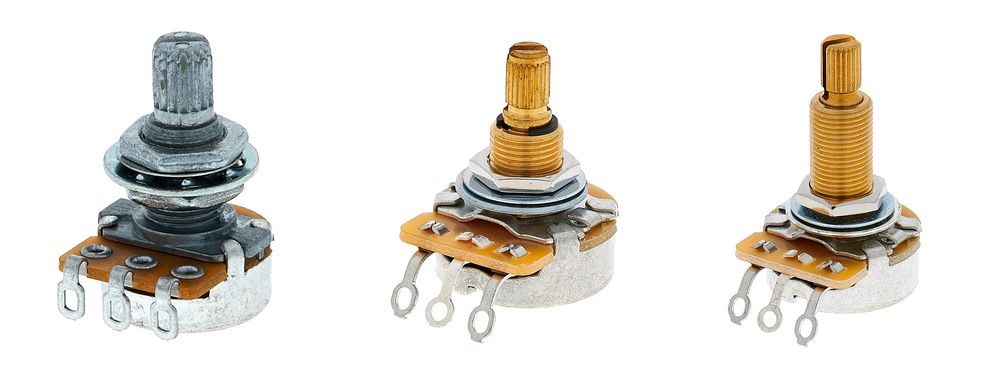3. Construction types
Depending on the use, you can choose among many different construction types of potentiometers from many different manufacturers. For small-signal uses, a wide variety of slide potentiometers is available. The conductive material often involved is coal, a layer of which is applied to a ceramic or other non-conductive-material carrier. If you want to manipulate larger signals, you can avail yourself of one of the many wire-wound potentiometers on offer.
Basically, you can distinguish between two groups pf pots:
- Slide potentiometers, or sliders, are familiar to most musicians from mixing desks and equalisers, where they serve as so-called faders. Thanks to the straight alignment of the resistors you can easily control several sliders with a single hand, even at the same time.
- Rotary potentiometers often use circular resistors. The wiper is attached to a shaft and can be moved to different positions on the resistor by being turned.
- Trimmers are a special construction type. They tend to be very small potentiometers which can be set with the aid of a screwdriver. They are used for initially calibrating equipment, for example the operating point of an amp, and thus usually not accessible form the outside.
A word on the shafts
In instrument making, for example with electric guitars, rotary potentiometers have become the standard. If you have ever removed the pot knobs from your amp and guitar, you'll know that there are two types of shaft: solid shafts and split shafts, the latter with grooves.

Pots with solid and split shafts
This difference of course affects the pot knobs, particularly the way they are fastened to the shaft!
A regular electric guitar will most likely feature plastic knobs which have a grooved bore. The are simply slotted onto the shaft and sit tight. If they should sit on the shaft too loosely, simply force the shaft apart a bit using a screwdriver. But take care not to use too much force, or the shaft may break!
Solid shaft pots require special buttons which are attached to the shaft with small set screws.

Pot knobs for solid shafts
Unfortunately, the classic Stratocaster or Les Paul pot knobs cannot be attached to solid shafts. So if you want to retrofit your guitar with solid shaft pots or even a rotary switch, without changing the instrument's look, tough luck - the regular knobs are almost never available with a set screw!

Standard Gibson and Fender pot knobs
There are some rotary knobs with a slit, but their shafts are frequently too long. As far as pots are concerned, the choice of resistance values is quite limited. You might have to swallow an uneasy compromise here.
Summary:
There are pots with smooth and with grooved shafts, which require different knobs.
Large or small - what's your pleasure?
While a huge variety of sizes and shapes are available, only a few construction types are commonly used in guitar making. The so-called standard pot is about 2.4cm in diameter and has a total height of 3cm. It can be found on practically every electric guitar.
If there is less space, for example below the pickguard of a jazz guitar, mini pots are a viable option. Their diameter is only 1.7cm at a height of 2.8cm. In combination with other switches, such pots are also available as push-pull pots or push pots. Standard pots can often not be used for Les Paul guitars, as the guitar's maple top is too thick. A long shaft pot can help in this situation, and it, too, is available in combination with switches.
Besides the mechanical size of a pot, its shaft diameter is another important criterion. Since electric guitars originate in the US, they are often measured in inches or fractions thereof. American standard pots often have a diameter of 3/8" (9.52mm). For mini pots, then, a thickness of 5/16" (7.94mm). But there are also standard pots with a mini pot's shaft diameter, often found on instruments made in Europe or Asia.

Standard pot, mini pot and long shaft pot
But there are also manufacturers that use internationally recognised metric measurements, featuring diameters of 10mm and 8mm, respectively. Naturally, an "inchy" nut of an American pot will not go onto the metric thread of an Asian instrument's potentiometer!
Summary:
Rotary pots may be measured in inches or centimetres and may have threads of various diameters.
Before buying a new replacement pot, make sure you know exactly what you are replacing!





